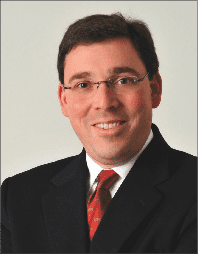Anesthesiologists—frequent partners in plastic surgery procedures—are raising their rates, according to a new study appearing in JAMA Internal Medicine.
Specifically, prices paid to anesthesia practitioners increased after hospital outpatient departments and ambulatory surgery centers contracted with a physician management company (PMC), and were substantially higher if the PMC received private equity (PE) investment, researchers at Columbia University Mailman School of Public Health and Cornell Weill Medical College in New York say. Until now, little was known about the influence of a physician management company on prices.
“Physician management companies, many of which are backed by PE firms, have grown increasingly common in anesthesia. These companies manage the back-end administration of medical practices, including insurance contracting and billing, and also provide staffing and management services to healthcare facilities,” says Ambar La Forgia, PhD, assistant professor of health policy and management at Columbia Mailman School.
“The aim of our research was to study changes in prices paid to anesthesiologists and certified registered nurse anesthetists after a facility contracted with a PMC,” La Forgia adds. “The paper considers the implications of corporate ownership in anesthesia for patients, practitioners and payers, and helps to inform the current policy debate around the corporate practice of medicine.”
The authors constructed a novel dataset identifying PMC contractswith hospital outpatient departments and ambulatory surgery centers from 2012-2017 and combined it with commercial claims data from three large national insurers in the Health Care Cost Institute database.
Based on a sample of2,255,933 privately insured patients who received anesthesia services, the study found that allowed amounts paid to anesthesia practitioners increased by 16.5% or by $116.39 more in facilities that contracted with a PMC versus non-PMC facilities. Similarly, the unit price (allowed amounts standardized by procedure complexity and duration) increased by 19% or by $18.79 when facilities contracted with a PMC, suggesting that the price increases were not driven by changes in the types of procedures.
The study identified 22 PMCs as having provided anesthesia staffing and management services during the sample period. Half of these PMCs received funding from a PE firm. In subsample analyses, the authors found that PE-backed PMCs increased allowed amounts by 26% while PMCs without PE funding only increased allowed amounts by 13%.
“One way PMCs may command higher prices is by amassing market share and by developing better negotiating expertise,” says La Forgia. “PE-backed PMCs may also have had stronger incentives to create short-term returns for investors relative to those without PE investments.”
PMCs may also gain negotiating leverage over insurers by threatening to move practitioners out-of-network. “Although we did not find evidence that practitioners moved out-of-network except for a modest increase in the year the contract started, the mere threat may be sufficient to influence negotiating dynamics between PMCs and insurance companies,” says La Forgia.
She adds that this research has important implications for payers, practitioners, patients, and policymakers. “In recent legal disputes, insurance companies have argued that the prices they pay to PMC practitioners are too high, while PMCs have argued that large insurers do not adequately compensate practitioners,” La Forgia says. “Either way, the proliferation of PMCs and PE firms in healthcare has raised concerns about increasing upward pressure on prices for in-network care, which can contribute to higher insurance premiums and higher patient cost-sharing.”




